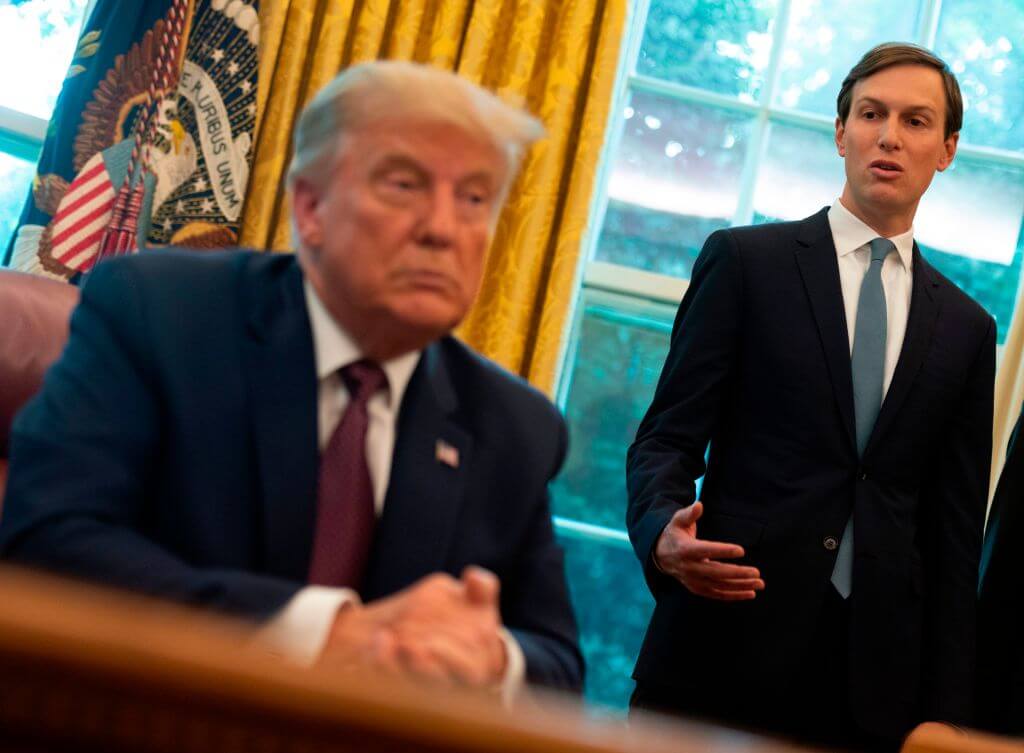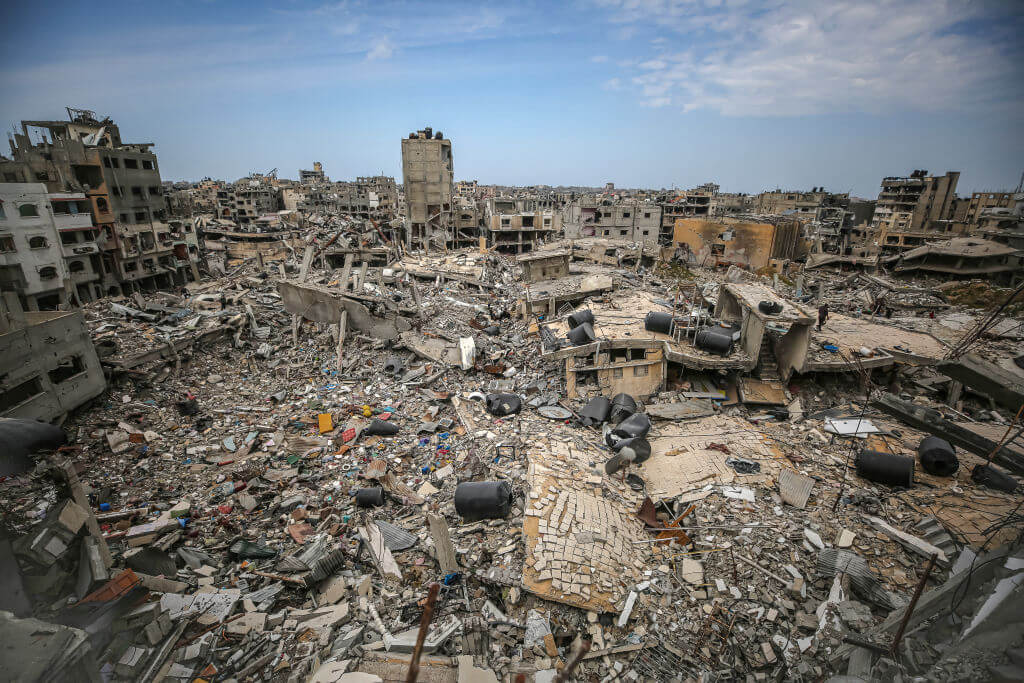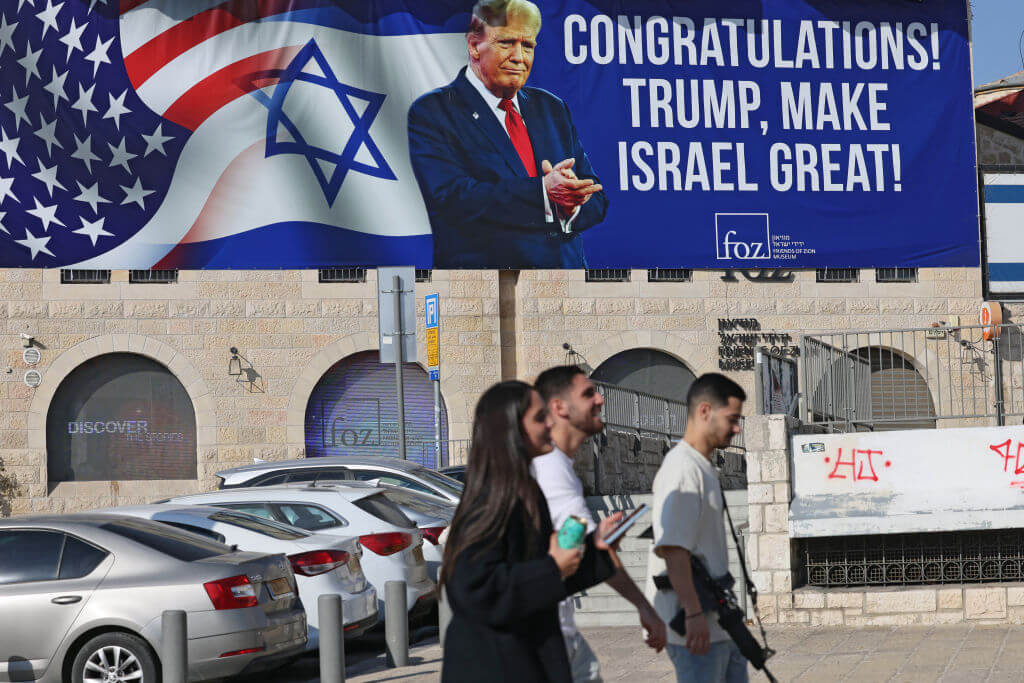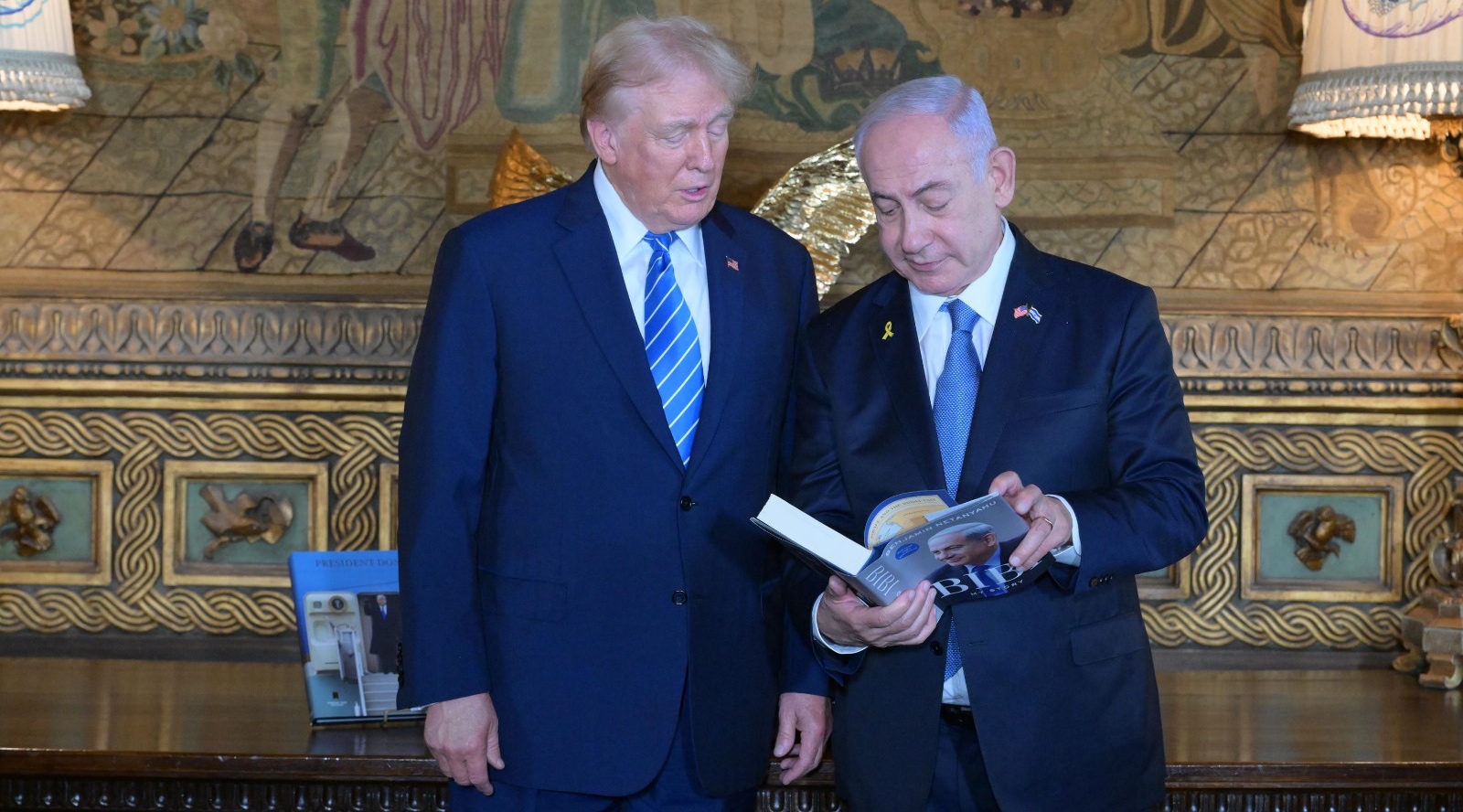Trump promised peace in the Middle East. Will his 2020 plan be the blueprint?
When Donald Trump campaigned for president in 2016, he vowed to broker the “ultimate deal” to resolve the Israeli-Palestinian conflict.
That promise remains unfulfilled.
Trump’s first term was marked by a series of bold pro-Israel moves, including relocating the U.S. embassy to Jerusalem and recognizing Israeli sovereignty over the Golan Heights. His ambitious 2020 peace plan, however, stalled amid Israeli political deadlock, rejection by Palestinian leaders and a pivot toward securing normalization agreements with Gulf states.
During the presidential election this year, Trump renewed his pledge to deliver peace in the Middle East, vowing to end the ongoing wars in Gaza and Lebanon while further isolating Iran. His policies for a second term remain vague and his formation of a staunchly pro-Israel cabinet suggests continuity.
Rep. Mike Waltz, Trump’s incoming national security adviser, said in an interview with Fox News on Sunday that “now is a moment to craft some type of arrangement” that “truly brings stability to the Middle East.” Karoline Leavitt, Trump’s incoming White House press secretary, told Axios that Trump will be “America’s negotiator in chief” in addressing the hostage crisis.
Could Trump’s earlier “peace to prosperity” plan provide a blueprint for a post-war framework in today’s vastly changed landscape?
Key elements of Trump’s 2020 plan

Trump’s 2020 plan, conceived during a previous administration of Prime Minister Benjamin Netanyahu, was a detailed peace proposal that the Israeli right-wing government and its supporters rushed to embrace, but it also incorporated commitments to longstanding U.S. support for Palestinian statehood.
For Israel, the plan preserved the stability of settlements beyond the lines drawn in 1967, requiring no uprooting of Israelis from their homes. It recognized Israeli sovereignty over approximately 30% of the occupied West Bank, including major settlement blocs, East Jerusalem, and the Jordan Valley.
For Palestinians, the plan outlined the creation of a demilitarized state on expanded territory comparable in size to the West Bank and Gaza. This was contingent upon the disarming of Hamas and an end to the Palestinian Authority’s payments to families of imprisoned terrorists.
The plan also proposed tunnels and overpasses to ensure seamless transportation between the West Bank and Gaza. Additionally, it promised $50 billion in investments, funded by some Arab states, to develop Palestinian infrastructure and boost the economy.
How the last four years impact what’s possible

After Netanyahu implied that the peace plan was a green light to annex Israeli settlements in the West Bank, Trump pivoted to brokering normalization deals with the United Arab Emirates and three other Arab countries in the final months of his first administration. These agreements, known as the Abraham Accords, were widely seen as a way to bypass Palestinian leadership and reshape the region’s diplomatic landscape.
The Biden administration made several secret attempts to build on this foundation, according to a book by Israeli journalist Barak Ravid. It intensified efforts last year to broker a landmark deal with Saudi Arabia.
The Hamas attacks on Israel on Oct. 7 disrupted these efforts, as the war in Gaza and escalating tensions with Hezbollah reignited the conflict. Skepticism about concessions has grown on both sides, with Israeli support for a Palestinian state sharply declining, and Palestinians skeptical about a possible breakthrough under Trump. Netanyahu’s reluctance to engage with the U.S. on Gaza’s post-war governance further delayed efforts to get back on track.
Nevertheless, prospects for a diplomatic breakthrough reemerged after President Biden outlined his vision for a Gaza ceasefire in May, which could pave the way for expanding the Abraham Accords into a broader agreement with Saudi Arabia.
Many Mideast experts consider a peace deal with Palestinians — or at least formal recognition of an independent Palestinian state — as a crucial condition for Saudi Arabia to normalize relations with Israel.
How Trump’s picks could help or hurt the plan

Trump’s national security picks are steadfast Israel supporters, some of whom have denied the existence of the Palestinian people and back the annexation of the occupied West Bank. This hardline stance could complicate efforts to address Palestinian demands in any future negotiations.
At the same time, Trump has surrounded himself with hedge fund investors, some of whom maintain financial relationships with key players in the region. That offers potential avenues for diplomatic engagement. Trump’s new Middle East envoy, Steve Witkoff, brings a real estate negotiating style that aligns with Trump’s approach to deal-making.
Jared Kushner, Trump’s son-in-law and Middle East adviser, remains involved behind the scenes despite stating earlier this year that he would not return to the White House. Kushner is regarded as a key figure in discussions with Saudi Arabia, leveraging his past success in the Abraham Accords. (Saudi Arabia’s sovereign wealth fund has invested $2 billion in Kushner’s private equity firm.)
Will Netanyahu be on board?

Netanyahu is in a much different political position than he was four years ago, and faces a delicate balancing act. While eager to finalize normalization with Saudi Arabia, which he sees as a crowning achievement in his tenure as Israel’s longest-serving prime minister, he has shown little appetite for recognizing a Palestinian state. His current political vulnerabilities and reliance on far-right coalition partners who staunchly oppose any concessions to Palestinians, complicate the path forward.
However, Trump’s alignment with Israel and his popularity with the Israeli public could provide the leverage needed to push Netanyahu toward compromise. And Trump’s backing might give Netanyahu the political cover required to navigate resistance within his coalition to finalize a deal with Saudi Arabia.
In January 2020, when Netanyahu came to Washington for the rollout of Trump’s peace plan, he reportedly told Kushner that he would “live with” the proposal. “You won’t live with it. You’ll thrive with it,” Kushner told him. That sentiment may shape Netanyahu’s approach as regional negotiations unfold.
The post Trump promised peace in the Middle East. Will his 2020 plan be the blueprint? appeared first on The Forward.
from The Forward https://ift.tt/mspjbEQ
Comments
Post a Comment